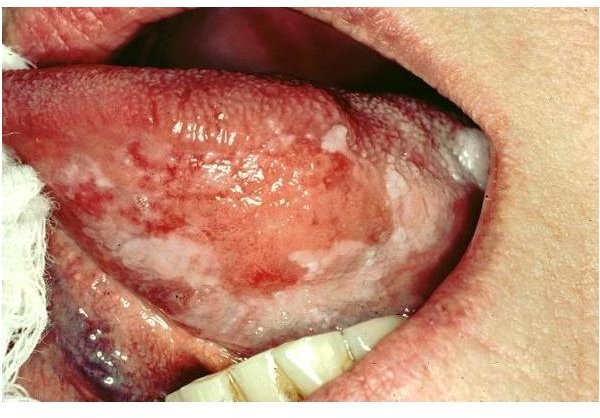What Does Tongue Cancer Look Like? Discover the Visible Symptoms of Tongue Cancer in Adults
There are a few different types of cancer that affect the tongue, and squamous cell carcinoma is by far the most common type. It is estimated that 90% of oral cancers are classified as squamous cell carcinoma. There are two different anatomical areas of the tongue. The oral tongue is the part of the tongue seen when someone sticks their tongue out. The tongue base is behind this. Since people can see parts of their tongue, when they are concerned about its appearance, they may think about what does tongue cancer look like?
Oral Squamous Cell Carcinoma
When cancer affects this area of the tongue the tumor is typically found in the side of the tongue. So, what does tongue cancer look like? The tumor appears red to grayish-pink in color and is often somewhat ulcerated. When the tumor is touched or bitten it tends to easily bleed. In some cases where the cancer is larger the patient’s ability to swallow and speak can be affected. This cancer can affect people of just about any age, but it is far more common in older people. In some cases, the cause is not discernible, but it is known that drinking and smoking are significant risk factors.
In the early stages of oral tongue cancer, surgery can often be performed to remove the cancer. In many cases, the patient will experience very little functional or cosmetic change. However, each patient is different, as is how the cancer affects them.
Surgery is often done as an outpatient surgery and can be just as effective as radiation therapy. Patients who have serious lung disease or heart disease might, however, not be able to have surgery, because these conditions can make anesthesia riskier. For these patients, radiation is the best, and often just as effective, option. The main difference between radiation and surgery for small oral cancers is radiation will require the patient to be treated often, sometimes every day, where surgery is most often just done once.
If the cancer has spread to the lymph nodes in the neck there is a different type of surgery, referred to as neck dissection, that can be performed to remove what is referred to as secondary cancer deposits. There are several different types of neck dissection that can be done and the type a patient has will completely depend on them and their cancer. The types range from radical to conservative.
Base of Tongue Squamous Cell Carcinoma
This type of cancer tends to be larger than oral cancer once it is finally diagnosed because in its earlier stages there tends to be none, or just a few, symptoms, and it is much harder to see. As the cancer progresses patients can experience pain at the base of their tongue, voice sound changes, a feeling of fullness, and sometimes patients will have trouble swallowing. Many patients with this type of tongue cancer will also have it spread to their neck before they are diagnosed because this cancer is often diagnosed at a later stage. Like oral tongue cancer, surgery and radiation are the most often used forms of treatment. In base of tongue cancers that are very large, the patient may have both surgery and radiation to try and treat the cancer.
Resources
American Oral Cancer Clinic. (2009). Tongue Cancer. Retrieved on May 6, 2010 from the American Oral Cancer Clinic: https://www.tonguecancer.com/tongue_cancer.htm
DoctorSpiller. (2000). Oral Cancer. Retrieved on May 6, 2010 from DoctorSpiller: https://www.doctorspiller.com/Oral_Cancer.htm
Image Credits
Tongue Cancer: Dr. Ed Cataldo - DoctorSpiller
